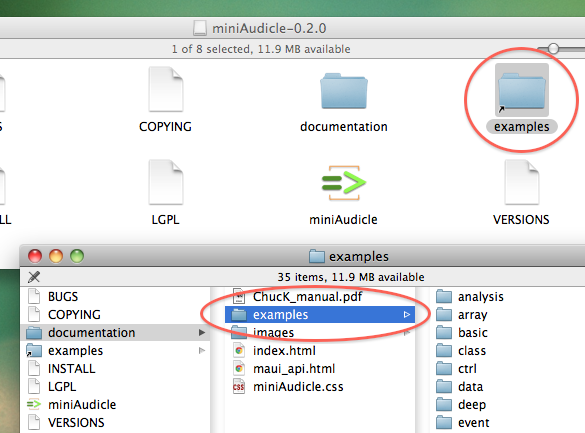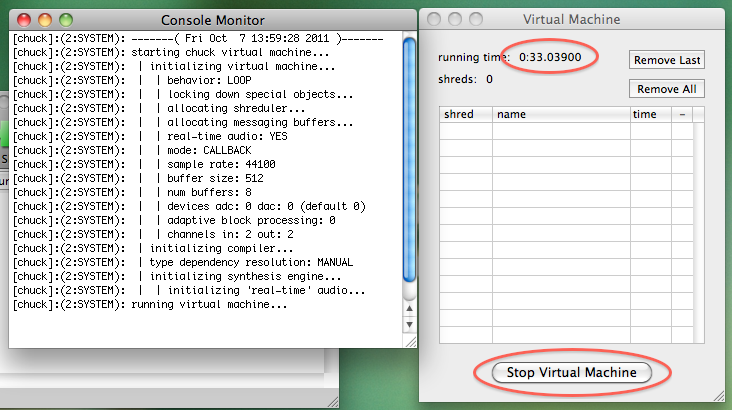How-to: Getting Started with ChucK
Setting Things Up
LINUX Machines at CCRMA
miniAudicle is already installed. Please do not try to build or compile the application by yourself.
- You might want to drag two applications - qjackctl and miniAudicle - to the task bar on the top of the desktop. If will create "Quick Launch" icons at the task bar.
- Start qjackctl a.k.a "Jack Control Panel" first.
- Click Start button on the qjackctl window. Check if you can see "started" message on the qjackctl window.
- Start miniAudicle.
- You are ready to use miniAudicle. (go to The First Program Section)
MacOS X
First off, You do not need "qjackctl" in OSX. However, you have to install miniAudicle on your computer, if you haven't installed yet. You can download the OS X version of miniAudicle from here.
- Once you have downloaded the DMG file. Mount it on your desktop and copy miniAudicle executable to your Applications folder.
- If you open the mounted disk image on the desktop (you can open it by double-clicking), you will find an alias of examples folder. Double-click it and it will take you to the real examples folder. Copy and paste this folder to your desktop or wherever you want it to be. This is totally optional, but highly recommended because this folder contains many useful codes you can freely use.

- You surely want to create a shortcut for miniAudicle in your Dock.

- Launch miniAudicle
- You're all set. (go to The First Program Section)
WINDOWS
It is almost same with the OSX case. contact TAs if you need any help. You can download the Windows version of miniAudicle from here.
The First Program
- When miniAudicle launched, you should see 3 windows on your screen: Editor, Virtual Machine and Console Monitor. If you are missing something, you can open it in "Window" menu.

- Start audio engine by clicking Start Virtual Machine button on the virtual machine window. You should see your clock is ticking in the virtual machine. Otherwise, see the troubleshooting section.

- Type (or copy & paste) this example in the editor:
SinOsc s => dac; 0.2 => s.gain; 1000 => s.freq; while ( true ) 1::day => now;
- Press Add Shred button in the editor to run the code. This will add the first "Shred" to the virtual machine producing audio samples to the audio output.

- You should hear a sine wave. Otherwise, see the troubleshooting section to get help.
More Programming Fun
Try these resources if you desperately want to use miniAudicle/ChucK for your musical needs.
- Unofficial ChucK User Forum at electro-eusic.com
- There are some examples you might want to dig in. They are included in the official miniAudicle release.
examples/analysis examples/deep examples/special
- Graham Coleman's most excellent tutorial on ChucK for Music